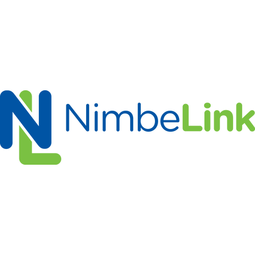
Technology Category
- Networks & Connectivity - Cellular
- Platform as a Service (PaaS) - Device Management Platforms
Applicable Industries
- Retail
- Telecommunications
Applicable Functions
- Product Research & Development
Services
- System Integration
The Customer
OptConnect
About The Customer
OptConnect is a company that provides managed end-to-end wireless solutions for a wide range of devices, including ATMs, retail kiosks, and digital signage. Their comprehensive solution includes cellular network connectivity and a secure Network Operations Center that provides 24/7 service monitoring. The company identified an opportunity to expand its market by developing an affordable, easy-to-install cellular end device. This led to the conception of Neo, a small, plug-and-play device that customers could use to quickly link their systems to the OptConnect service.
The Challenge
OptConnect, a provider of managed end-to-end wireless solutions for devices such as ATMs, retail kiosks, and digital signage, identified an opportunity to expand its market by developing an affordable, easy-to-install cellular end device. The company envisioned Neo, a small, plug-and-play device that customers could use to quickly link their systems to the OptConnect service. The challenge was to create a small, sturdy, reliable device that could integrate OptConnect's sophisticated management software, thereby enabling the company to reach the largest possible market. The device needed to leverage modern, high-speed 4G LTE cellular data connectivity, while being simple and highly reliable.
The Solution
OptConnect partnered with NimbeLink, a leader in smart cellular IoT solutions. NimbeLink’s Skywire family of cellular modems offered the small form factor and sturdy design that OptConnect required for its customer environment. NimbeLink provided a customized design that allowed OptConnect to integrate their existing remote management software into the device, a feature not available from other providers. The custom Neo design was developed in record time and was based on NimbeLink’s E2C Link (Ethernet-to-Cellular) router, powered inside by a Skywire embedded LTE modem. This partnership resulted in the creation of a product that was truly OptConnect's and delivered exactly what their customers needed.
Operational Impact
Quantitative Benefit

Case Study missing?
Start adding your own!
Register with your work email and create a new case study profile for your business.
Related Case Studies.

Case Study
Improving Production Line Efficiency with Ethernet Micro RTU Controller
Moxa was asked to provide a connectivity solution for one of the world's leading cosmetics companies. This multinational corporation, with retail presence in 130 countries, 23 global braches, and over 66,000 employees, sought to improve the efficiency of their production process by migrating from manual monitoring to an automatic productivity monitoring system. The production line was being monitored by ABB Real-TPI, a factory information system that offers data collection and analysis to improve plant efficiency. Due to software limitations, the customer needed an OPC server and a corresponding I/O solution to collect data from additional sensor devices for the Real-TPI system. The goal is to enable the factory information system to more thoroughly collect data from every corner of the production line. This will improve its ability to measure Overall Equipment Effectiveness (OEE) and translate into increased production efficiencies. System Requirements • Instant status updates while still consuming minimal bandwidth to relieve strain on limited factory networks • Interoperable with ABB Real-TPI • Small form factor appropriate for deployment where space is scarce • Remote software management and configuration to simplify operations

Case Study
How Sirqul’s IoT Platform is Crafting Carrefour’s New In-Store Experiences
Carrefour Taiwan’s goal is to be completely digital by end of 2018. Out-dated manual methods for analysis and assumptions limited Carrefour’s ability to change the customer experience and were void of real-time decision-making capabilities. Rather than relying solely on sales data, assumptions, and disparate systems, Carrefour Taiwan’s CEO led an initiative to find a connected IoT solution that could give the team the ability to make real-time changes and more informed decisions. Prior to implementing, Carrefour struggled to address their conversion rates and did not have the proper insights into the customer decision-making process nor how to make an immediate impact without losing customer confidence.

Case Study
Digital Retail Security Solutions
Sennco wanted to help its retail customers increase sales and profits by developing an innovative alarm system as opposed to conventional connected alarms that are permanently tethered to display products. These traditional security systems were cumbersome and intrusive to the customer shopping experience. Additionally, they provided no useful data or analytics.

Case Study
Vodafone Hosted On AWS
Vodafone found that traffic for the applications peak during the four-month period when the international cricket season is at its height in Australia. During the 2011/2012 cricket season, 700,000 consumers downloaded the Cricket Live Australia application. Vodafone needed to be able to meet customer demand, but didn’t want to invest in additional resources that would be underutilized during cricket’s off-season.





